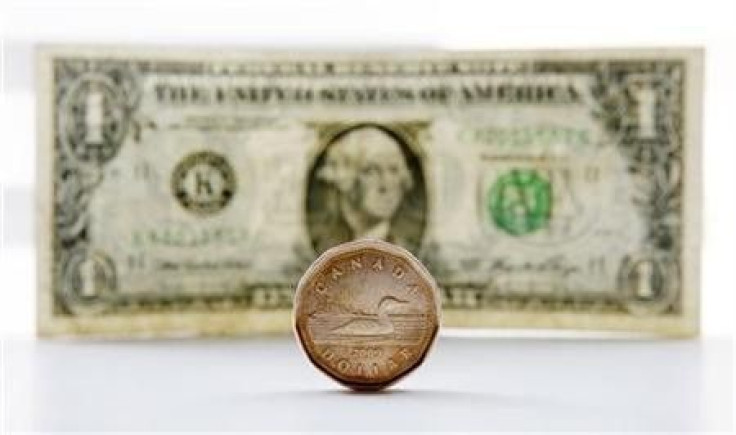Dollar slips on euro zone contagion fears

TORONTO (Reuters) - The Canadian dollar slipped for the third day against the U.S. currency on Wednesday amid signs that Europe's debt crisis was spreading.
However, the currency recovered from more than a one-month low, along with the euro, after European Central Bank buying of Italian and Spanish debt helped stem a renewed sell-off of euro zone government bonds.
The Canadian dollar is pretty much trading off of headline risk still, so I think markets are still in that wait-and-see mode to see what happens with developments in Europe, said Mazen Issa, Canada macro strategist at TD Securities.
There's really no clarity in terms of what will happen in Italy and which direction spreads will go.
The euro zone debt crisis has intensified sharply as investors question Italy's ability to sustain its debt burden, widely viewed as too big for other governments in the bloc to bail out as they have the much smaller Greek, Irish and Portuguese economies.
A climb in yields in France, Belgium and Austria has raised concerns those countries could come under increasing attack as incoming governments in Italy and Greece struggle to implement fiscal reforms.
At 8:13 a.m. (1313 GMT), the currency was at C$1.0257 against the U.S. dollar, or 97.49 U.S. cents, down from Tuesday's North American session close at C$1.0208 against the greenback, or 97.96 U.S. cents.
There's still a lot of risk out there, as long as the issues in Europe are still very much prevalent, which they are, the bias is for the Canadian dollar to weaken further, added Issa.
Earlier, the currency fell as low as C$1.0290, or 97.18 U.S. cents, its weakest level since October 12.
Canadian government bond prices were little changed across the curve. The two-year bond was down half a Canadian cent to yield 0.905 percent, while the 10-year bond eased 3 Canadian cents to yield 2.129 percent.
(Reporting by Claire Sibonney)
© Copyright Thomson Reuters 2024. All rights reserved.











